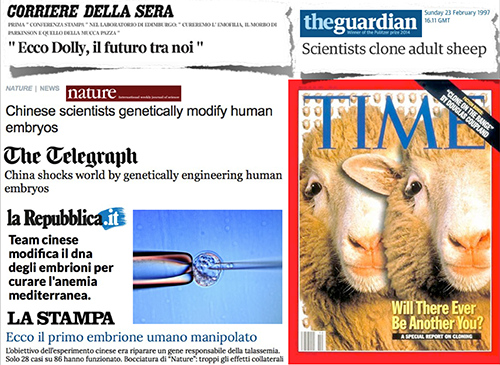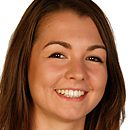EMBL School Ambassador Giorgia Guglielmi
Country: Italy
Profile
My name is Giorgia and I come from Apulia, a sunny region in the south of Italy. I am currently in the last year of my PhD at EMBL Heidelberg and my scientific interest is in understanding how embryos get their final shape. During my PhD, I have developed a system to achieve light-mediated control of cell contractility in a living organism. I am now using this system in the fruit fly embryo to understand how cells and tissues bend inwards to form folds or tubes.
Before joining EMBL, I studied Biotechnology and then Molecular and Cell Biology at the University of Rome “Tor Vergata”. During my Master thesis project, I studied the molecular machinery that makes bacteria divide. After my Master, I moved to the Sanger Institute in Cambridge (UK) to continue working on bugs and understand how pathogenic bacteria respond to different antibiotic treatments.
There are two things that I like most about being a scientist: discovering something new (almost) every day, and communicating the exciting discoveries that I make to others. This is the reason why I decided to become an EMBL School Ambassador: spread the word, spread the passion!
Diary
May 2015, visit to a high-school in Foggia, Italy
When the 150 students (17 to 19 years old) of the Liceo Classico “Lanza” entered the school auditorium, they were surprised to see on the screen a group of researchers dancing to the rhythm of a popular song. They soon found out that for every viewing of that video on the Internet, a donation would be made to a research institute in Barcelona. At this point everyone grabbed their smartphones to share the video and give a contribution to research.
After this lively introduction, the students learned that it is now possible to cure some genetic diseases by replacing the “faulty” gene with a normal one, and how scientists can control the activity of proteins and cells with light. They also discovered personalized medicine and how in 10-15 years we could go to the doctor and get our DNA sequenced to find out what problem we have or which therapy would be the most effective one for us. They learned that today, thanks to the advances in microscopy and other molecular biology techniques, we are able to see every detail of cells, organelles and even proteins, we can read and interpret the genetic information encoded by the DNA and understand how a single fertilized cell can give rise to a complex multicellular organism.
In order to guide the students through the path leading to scientific research, I told them about my studies and my past research: they learned about “good” and “bad” bugs, how a bacterium divides and how scientists can use this information to design new antibacterial treatments. They also found out that bacteria often become resistant to antibiotics and that some of them can even produce more toxic substances if exposed to sub-lethal doses of these drugs.
Although lunchtime was approaching, they kept focused and were interested in knowing about morphogenesis, or how organisms get their final shape. To this end, they were shown a beautiful video of a fertilized human egg becoming a baby. They learned about the importance of model organisms in studying such complex morphogenetic movements: in fact, by figuring out how a particular tissue folds in e.g. the fruit fly, we can describe how the neural tube develops in humans.
They then found out what I have been doing during my PhD at EMBL and how, by controlling cell contractility with light, I gained an insight into how tissues bend to form folds or tubes. Finally, they heard about the process of peer review, which is important to address how well and rigorously scientific research is performed, and about the work perspectives following a PhD.
After the talk, the students asked a lot of questions, ranging from antibiotic resistance to neuroscience. They were eager to know more about the human genome and how we can extract information from the DNA. Those who were already interested in a career in science, sought advice about the university path they should follow. Others were curious about the daily routine of a scientist, which skills are required to do research and the challenges of working abroad.
This school visit was really a great experience for me – at the same time fun and enriching – and I have to thank the teachers for making this event possible and ELLS for supporting me. But most of all, I have to thank the students of the Liceo “Lanza” for being such a wonderful audience, always enthusiastic and responsive. Grazie!


